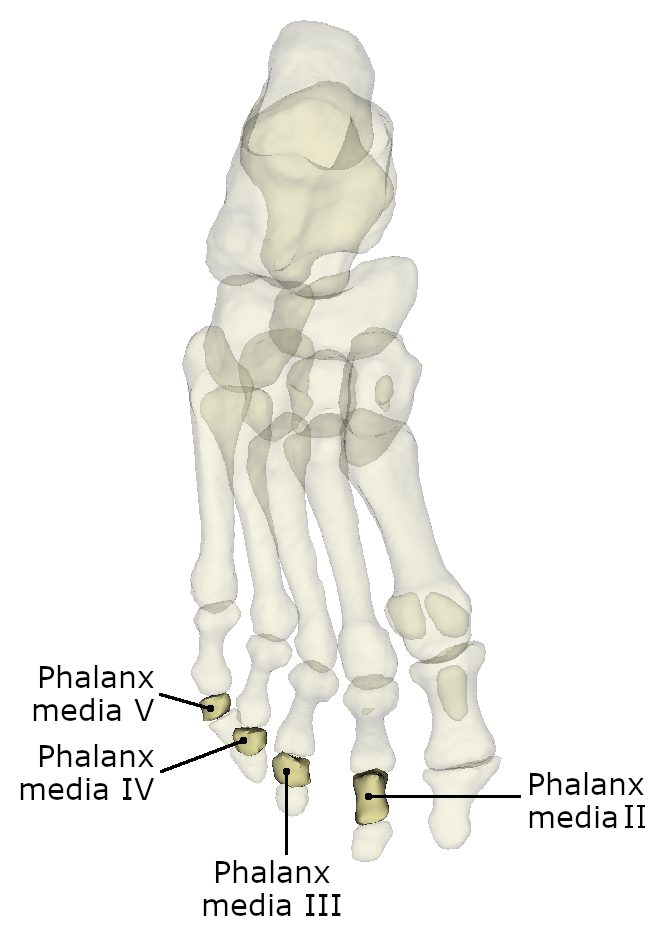Zehenknochen/en: Unterschied zwischen den Versionen
Becher (Diskussion | Beiträge) |
Will (Diskussion | Beiträge) (metacarpal zu metatarsal geändert) |
||
| Zeile 47: | Zeile 47: | ||
The head is called caput phalangis and represents the distal end of the bone. It is flattened at the distal phalangis, where no other bone is adjacent. | The head is called caput phalangis and represents the distal end of the bone. It is flattened at the distal phalangis, where no other bone is adjacent. | ||
| − | The proximal end of the tubular bone is called the base phalangis. In the phalanx proximalis, this part has a concave base which is connected to the respective | + | The proximal end of the tubular bone is called the base phalangis. In the phalanx proximalis, this part has a concave base which is connected to the respective metatarsal bone. |
Between the base and the head of the phalanges is the shaft, the corpus phalangis. It is a somewhat narrower area and has a columnar-like shape. | Between the base and the head of the phalanges is the shaft, the corpus phalangis. It is a somewhat narrower area and has a columnar-like shape. | ||
Version vom 13. November 2020, 07:37 Uhr
The big toe (hallux) consists of two limbs (phalanx proximalis and distalis), the remaining toes of three (phalanx proximalis, media and distalis). Like the metatarsals, the proximal phalanges are divided into base, corpus and caput.
Anatomy
The toe bones are formed by 14 tubular bones. These represent the phalanges of the foot. They are the end phalanges of the foot and therefore connect distally to the five metatarsal bones. The individual bony elements are divided between the individual toes. All toes consist of three phalanges, except the big toe, which consists of only two phalanges. Due to this division, the phalanges are called differently. The toe elements close to the body are the phalanx proximalis. The distal phalanges are called phalanx distalis. Between these are the phalanx media. In big toes the phalanx media is missing, so it consists only of the phalanx proximalis and phalanx distalis.
The individual phalanges can also be structurally subdivided according to their affiliation to the tubular bones. A single one of these bone elements is subdivided into the head, the shaft and the base. The head is called caput phalangis and represents the distal end of the bone. It is flattened at the distal phalangis, where no other bone is adjacent.
The proximal end of the tubular bone is called the base phalangis. In the phalanx proximalis, this part has a concave base which is connected to the respective metatarsal bone.
Between the base and the head of the phalanges is the shaft, the corpus phalangis. It is a somewhat narrower area and has a columnar-like shape.
The proximal phalanx is also called the metatarsal phalanx and is the longest of the three bone links. Its base meets the respective metatarsal bone. The distal end articulates with the phalanx media at each toe. The exception to this is again the big toe. There the phalanx proximalis is directly connected to the phalanx distalis.
The phalanx media is located in the middle of the phalange row. It is medium in size and its base has a larger diameter than the distal end. At the head of this phalange there are two small bony elevations. The proximal end connects to the phalanges. The distal end is followed by the Phalanx distalis.
The distal limb of the entire upper extremity is the phalanx distalis. It is always the shortest of the phalanges. The base articulates with the phalanx media, except at the thumb where it is directly connected to the phalanx distalis.












